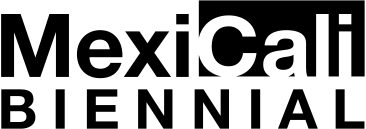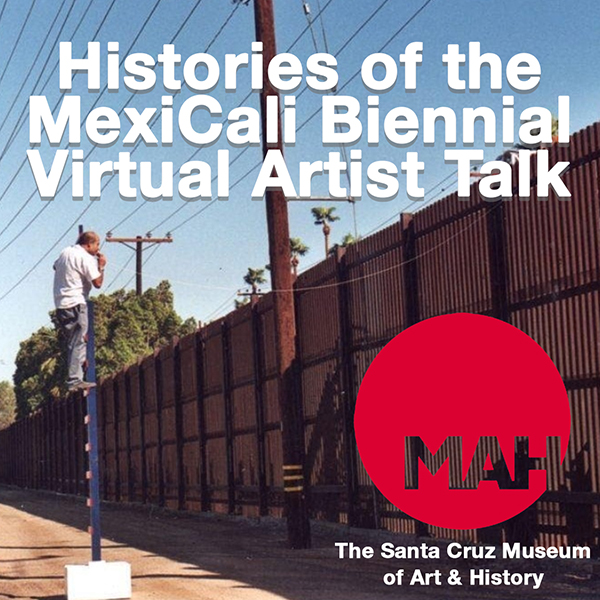Santa Cruz Museum of Art and History hosts MexiCali Biennial co-founders Ed Gomez and Luis G. Hernandez as well as curators April Lillard-Gomez and Rosalía Romero for a deep dive into the history of the project and this year’s theme The Land of Milk and Honey.
The MexiCali Biennial is a non-profit contemporary visual arts organization that focuses on the area encompassing California and Mexico as a region of aesthetic production. The organization is migratory in nature and showcases exhibitions on both sides of the California/Mexico border. The MexiCali Biennial was originally started as a project critiquing the proliferation of international and regional art biennials and as a result, may be shown at any time and at any location.
The MexiCali Biennial was conceived in 2006 by artists Ed Gomez and Luis G. Hernandez. Gomez and Hernadez discuss the formation of the MexiCali Biennial and several border-based projects from 2006-2020.
We’ll also be joined by April Lillard-Gomez, project researcher and manager, and the newest member of the curatorial team, Rosalía Romero. April and Rosalía will discuss the upcoming iteration of the project, titled The Land of Milk and Honey. This iteration will be a traveling multidisciplinary arts and culture program focused on the ideological concept of Agriculture in the regions of California and Baja California. This program seeks to navigate discourse around concepts of labor, food (in)security, environmental issues, farming practices, and food justice in the areas’ shared narrative.
Taking inspiration from John Steinbeck’s portrayal of the region as a corrupted Eden, through esteemed works such as The Grapes of Wrath and East of Eden, The Land of Milk and Honey questions ethical, cultural and regional practices related to foodways, and the venture from seed to table. Steinbeck’s travels around Baja California and his seminal works such as Viva Zapata!, the Pearl, and the Log From the Sea of Cortez, as well as his insight into migrant workers in and around his hometown of Salinas, will serve as anchors for a series of exhibitions, by pinpointing physical and conceptual locations for programs and exhibitions.
April will discuss her vision for this program and how her own history as a transplant from Oklahoma compels her interest in Steinbeck’s presentation of the displaced migrants of the 1930s as central to California’s story. Rosalía will discuss her new research into Steinbeck’s cultural production in Mexico, including José Clemente Orozco’s illustrations for the first edition of The Pearl and cinematic representations of Mexico’s revolutionary heroes in Viva Zapata!
This project was made possible with support from California Humanities, a non-profit partner of the National Endowment for the Humanities. Visit calhum.org.

